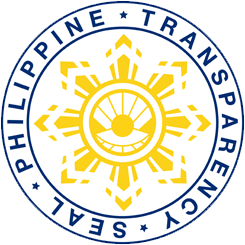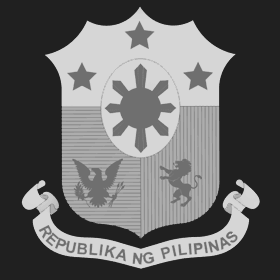Written by Dr Emil Q Javier
“There are those who look at things the way they are, and ask why…I dream of things that never were, and ask why not?…Robert Kennedy
(A reader, Ms. Lilybeth Eleccion called attention to the attribution of the “Why Not!” quote to Robert Kennedy. The original quote was really made by the Irish playwright, essayist and 1925 Nobel Prize winner for literature, George Bernard Shaw. Kennedy’s adaptation however reads a little better.)
At the core of the rice policy debate are the interconnected issues of rice self-sufficiency, rice trade liberalization and what to do with the National Food Authority.
Rice self-sufficiency is emotionally and politically charged because rice is our major staple and is very much part of our Asian culture. Thus, all presidential administrations and congresses since independence have adopted the mantra of rice self-sufficiency with little debate.
We are not alone in our zealous protection of our rice supply. Japan, South Korea, China, and India are as protective, if not more. And these four economic giants are not moved, WTO rules notwithstanding.
However, the painful reality is that except for a very brief period in the early 1970s during the term of President Marcos, we always had been short. We are short not because our rice farmers are inept because our rice yields per hectare are respectable even with all the typhoons that visit us every year, but for the simple reason that we have much more mouths to feed with our limited rice land. Our rice yields are higher are higher than those of Thailand but Thailand has three times as much rice lands as we do and only two-thirds of our population.
In order to ensure our rice supply, we have to import from our ASEAN neighbors. And for that reason, the National Food Authority (NFA) and its predecessor agencies (NGA, NAMARCO, NARIC) had been tasked with maintaining a strategic reserve or buffer from which to draw rice during emergencies and natural calamities.
NFA however has a second function: to stabilize rice prices which in turn has two sub-objectives, 1) to maintain rice prices affordable to consumers, and (2) to ensure that rice farmers earn a reasonable return from their efforts. These two secondary objectives are in conflict with each other and the root of the governance issues bedeviling NFA (not to mention suggestions of corruption).
Our rice self-sufficiency policy had been costly. In order to encourage our farmers to grow more rice, we have to protect them from cheap rice available in the world market by 1) restricting imports and 2) providing price support by buying palay from farmers at a higher price. As cited by NEDA, numerous studies estimating the costs have shown that every peso spent to implement our rice self-sufficiency policy, it has cost the economy P2.00-3.00.
However, this loss ratio is exaggerated because it includes the costs of irrigation and farm-to-market road which we should invest anyway whether our farmers plant rice or other crops. Since NFA has limited funds to buy palay (in the order of 5% of total supply), the real protection (and cost) is from the quantitative restrictions (QRs) of imports for which all consumers pay with higher rice prices.
The irony is that much of the subsidy intended for rice farmers do not actually accrue to them. Farmgate price of palay has increased overtime but the retail price of rice increased much faster. The margin has increased but it went to players in the rice supply chain other than the farmers.
The unsustainable welfare costs of the rice self-sufficiency policy to the national economy and the mounting debts of NFA (now estimated at P155 billion), prompted NEDA, the Department of Budget and Management (DBM) and the Department of Finance (DOF) to propose in a joint memorandum to the President to finally resolve the impasse by restructuring NFA to give up its price stabilization function and instead focus exclusively on its buffer stocking mandate.
By implication, the price stabilization function will be left to the market. Thus, further, the three cabinet departments proposed that the country lift quantitative restrictions (QRs) on rice imports but maintain a tariff of 40% which can be reduced slowly as we achieve greater efficiency in rice production.
Since the Department of Agriculture (DA), the cabinet department directly responsible for rice did not sign the joint cabinet memorandum, we can only surmise that DA does not agree with the prescription.
Consequences of Rice Trade Liberalization
To anticipate the consequences of further rice trade liberalization, PhilRice-DA agricultural economists conducted simulation studies on rice supply and demand, on farmgate palay and wholesale rice prices, as well as on gross income of farmers under two scenarios: Scenario A Tariff at 35 percent with QRs (current situation), and Scenario B Tariff at 35 percent without QRs (liberal rice trade).
As expected a liberalized rice trade (Scenario B) will significantly bring down rice prices (from P34 per kilogram down to P25 per kilogram). This will be of immense benefit to rice consumers, particularly for the poor, who consume more rice per person than the rich.
However, cheap rice imports will bring down the farmgate price of palay and inflict a 29 percent drop of gross income on rice farmers.
The simulations also indicated that the Philippines will end up importing more rice because local production will decline by 8 percent as farmers shift to other crops and apply less fertilizers. Consumption on the other hand will increase by 10 percent because with cheaper rice poor people are able to purchase more.
In theory, in the long run, more liberal trading among nations across all products and services will bring more economic benefits in the aggregate. But as always, more benefits will accrue to some; others will get less and may even be worse off. Thus, the need for safety nets for those who are left out. And time for adjustment for those who are not ready.
Rice trade liberalization will entail huge social costs. A drop of income of 29 percent for the three million rice farmers many of whom are themselves already below the poverty line will be devastating. The savings from the rice subsidy to NFA will only end up in the DSWD conditional cash transfer program as the impoverished rice farmers swell the ranks of the CCT beneficiaries.
But can the Filipino rice farmers survive in a liberalized rice market? To be continued.
***
Dr. Emil Q. Javier is a Member of the National Academy of Science and Technology (NAST) and also Chair of the Coalition for Agriculture Modernization in the Philippines (CAMP). For any feedback, email eajavier@yahoo.com.




